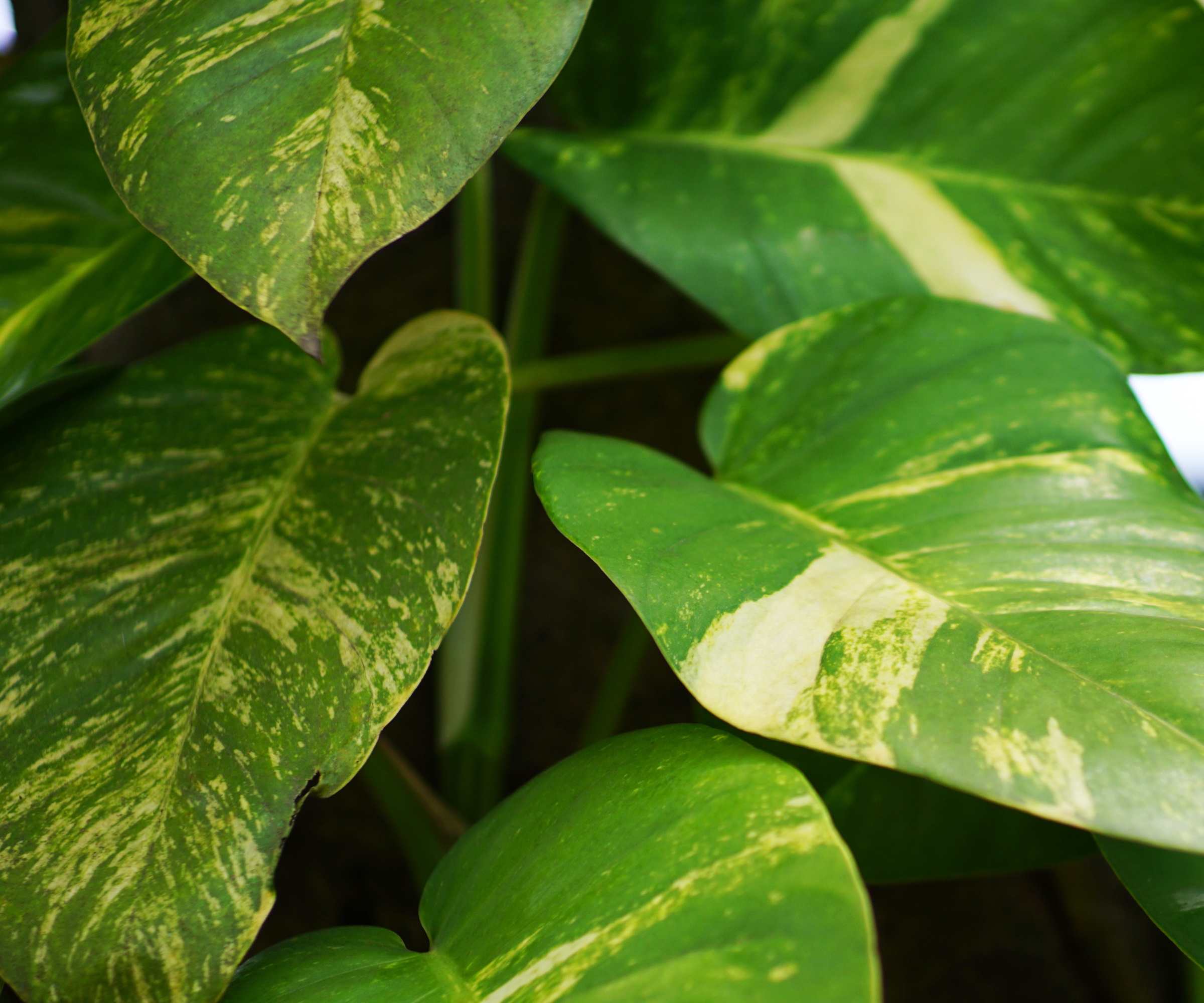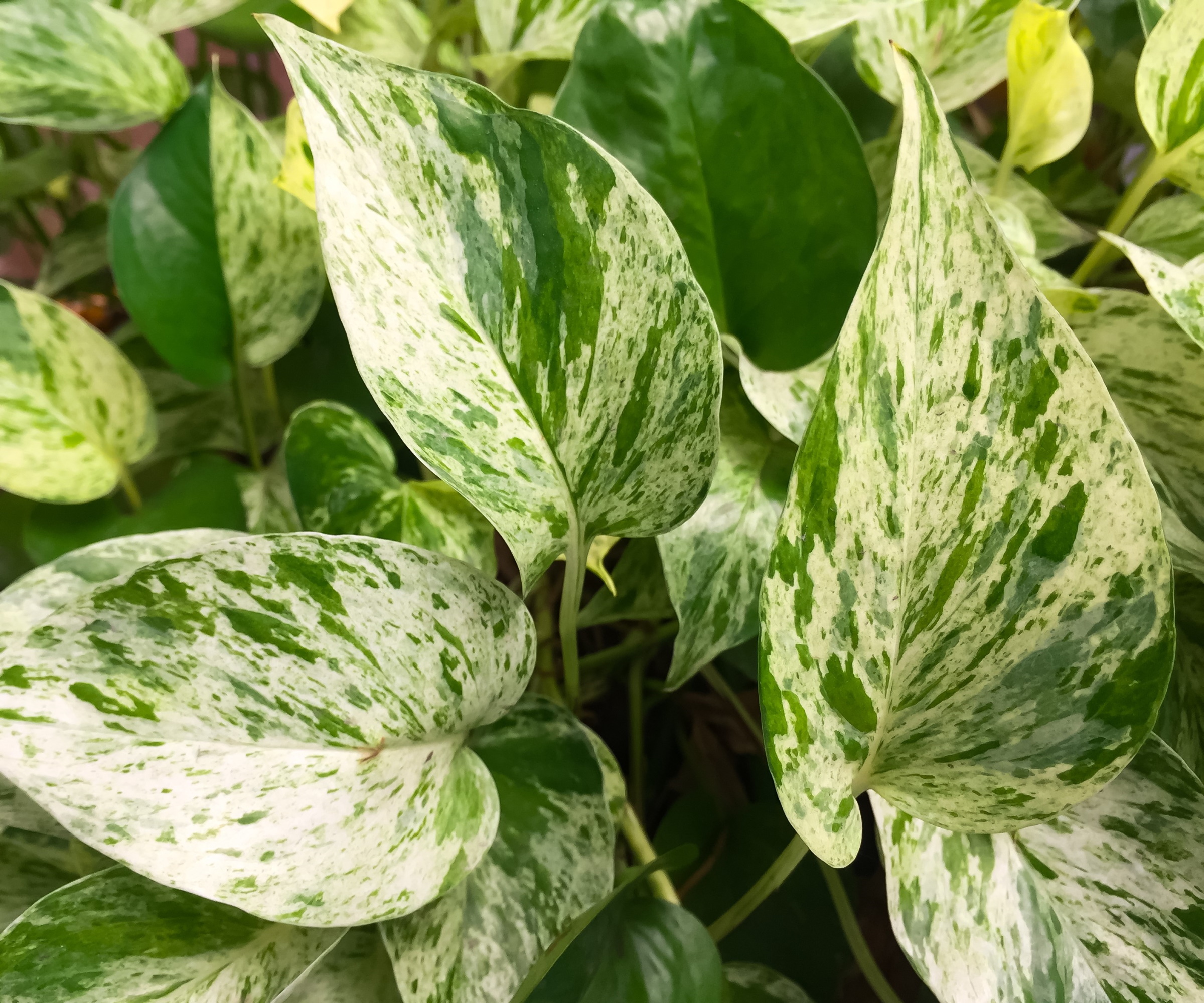
Indoor plants with variegated leaves have surged in popularity in recent years. Today, many can be found in garden stores and online shops, transforming interior spaces with their unique and captivating patterns and colors. There are so many different varieties to choose from, and many plant lovers consider variegated options some of the best indoor plants to grow. Indeed, when thinking about indoor plant ideas, variegated foliage will certainly add drama to your interior.
The appeal of variegation lies in the unusual aesthetic of these plants. Variegated leaves feature a rainbow of colors and patterns, often combining shades of green with creamy whites, yellows, pinks, or reds.
Popular variegated options include pothos, calatheas, and monsteras, all of which are relatively low-maintenance indoor plants to grow and are readily available. We asked the experts for their tips and recommendations for growing variegated plants.

4 of the best variegated plants to grow
Indoor plants with variegated foliage can add impact and drama to your plant collection. We spoke to the experts to find out how to care for these plants and some of the top recommended options.
Monstera 'Thai Constellation'

If you are looking for a plant 'that will make a big statement, it's worth getting a variegated Monstera deliciosa,' says Jeanie Psomas, plant expert and owner of The Plant Lady: San Francisco.
Jeannie recommends Monstera deliciosa 'Thai Constellation', which, she says, 'makes the most sense for the average enthusiast since their variegation is stable and impactful and their growth habit is bushy.'
This monstera is considered a rare houseplant, in that you do not come across this variety as frequently as other monstera varieties. It is popular for its unique variegation and large, perforated leaves, which would be an attractive addition to any indoor garden. As such, it has been a regular sight in recent years on Instagram plant feeds. It is also considered an easy indoor plant to grow, as long as you follow a few basic rules.
Key considerations when growing monstera:
- Light: This plant prefers bright, indirect light. It can tolerate low light, but it may not grow as well. Avoid direct sunlight as it can scorch and damage the leaves.
- Watering: The 'most common issue with monstera plants is overwatering,' Jeannie says. 'These plants are more drought tolerant than most people assume, so it is recommended to allow them to dry out between waterings.'
- Soil: Use a free-draining potting mix, combining a mixture of perlite, bark and potting soil to create a soil mix that has good drainage and is nutrient-rich.
- Fertilizing: Jeannie recommends using a 'foliage-focused fertilizer that is higher in nitrogen to support the leaves of this plant.' Using a general fertilizer such as this Indoor Plant Food from Greendigs would be ideal.
- Care: 'It is important to note that this plant will get quite large over time,' Jeannie says, so finding a suitable location where you are happy to let the plant grow is key.
Monstera deliciosa 'Thai Constellation', is a unique and somewhat rare Swiss cheese plant, with white and green foliage forming attractive patterns.
Marble Queen Pothos

'I love mixing variegated species into my plant collection because they add so much contrast and color to the plant family,' says Nick Cutsumpas, plant expert and founder of Farmer Nick. One mood-boosting plant that can do this is the marble queen pothos, which Nick says is 'great for trailing off of a bookshelf.'
Pothos plants are relatively easy to care for, although variegated plants can be a 'bit more finicky than your standard green foliage,' Nick says. Whilst the white and yellow patterns are attractive, remember that a variegated leaf will have 'less chlorophyll when compared to fully green leaves', so getting the lighting requirements right is crucial.
Key considerations when growing pothos:
- Light: As with most variegated leaves, Nick recommends opting for a location with 'bright, indirect light.' Importantly, variegated leaves are sensitive and 'too much light can cause burning and browning,' Nick says.
- Watering: When the top 1/2 - 1 inch of soil is dry to the touch, water your pothos, ensuring that the water can drain freely. Do not allow the soil to stay too wet or dry out for extended periods, as this will damage the plant.
- Soil: Use a free-draining potting mix, combining a mixture of perlite with soil to create a soil mix that is well-draining. Ensure that water can drain from your container.
- Fertilizing: As a fast-growing indoor plant, pothos plants can benefit from regular feeding through the spring and summer. Using a general house plant fertilizer, such as this indoor plant food from Walmart.com would be suitable.
- Care: Considered one of the best indoor hanging plants, this pothos and other variegated plants can be 'used as an accent color that pops among the green background,' Nick says. Your pothos plant may need some support and/or tying in as it grows in length.
The marble queen pothos is famed for the unique pattern on its glossy, heart-shaped leaves. This trailing indoor plant is as low maintenance as they come.
Pink princess philodendron

The Philodendron 'Pink Princess' is 'famous for its attractive heart-shaped leaves with pink and green variegation,' says Vladan Nikolic, houseplant expert and founder of Mr Houseplant. This plant is a unique take on the standard green philodendron varieties that also add impact to any indoor space.
As the popularity of pink houseplants continues to grow, this unusual philodendron remains a must-have variety and is sure to add something new to your indoor garden. This philodendron is relatively low-maintenance and an easy indoor plant to grow. 'It is important, however, to find the right balance with light,' Vladan says. 'Too much direct light will scorch the leaves, whereas too little will affect the variegation.'
Key considerations when growing a philodendron:
- Light: 'Avoid overexposure to direct light,' Vladan says. Ideally, your philodendron should have 'no more than 2 - 3 hours of weak sunlight'. The key point to remember is bright, indirect light is always preferable.
- Watering: Vladan recommends 'watering your philodendron only when the top 2 inches of soil dry out'. Place your finger just underneath the soil level to assess the moisture level in the soil.
- Soil: Use a potting mix combined with drainage material, such as with bark or perlite to create a soil mix that is well-draining. Ensure that drainage holes are not clogged up, and that water can pass through the soil and the container easily.
- Fertilizing: When considering how to care for your philodendron, plants can benefit from regular feeding through the spring and summer. Apply a monthly feed, diluting as necessary, using an organic plant food such as this liquid fertilizer for indoor plants at Perfect Plants.
- Care: 'Prune your philodendron if you notice any dead or diseased stems,' Vladan says. In doing so you will encourage the plant to expend energy on new and healthy growth. It is also best to 'repot your plant yearly, to get rid of old, compacted soil and to replenish the plant with all the necessary nutrients from fresh soil,' Vladan says.
The highly sought after pink princess philodendron is at the top of many plant collectors wish lists, and for good reason. Characterized by deep green, heart-shaped leaves with bubblegum pink variegation, it is truly unique in the plant world.
Stromanthe triostar
Stromanthe triostar, or Stromanthe sanguinea, is an underrated houseplant especially when you 'consider its stunning pink, purple, and white variegated foliage,' Vladan says. Whilst not the easiest plant to look after, by finding the right spot in your home and with some basic maintenance you will be able to enjoy the foliage of this tropical-looking plant.
Triostars grow best in bright, humid and warm environments. 'The more indirect light you provide, the more vibrant the variegation,' Vladan says, 'and the topside of the leaves will be whiter, while the underside will be more purple.'
Key considerations when growing a triostar:
- Light: This is a tropical plant, and dappled, indirect light is preferable. 'Prolonged exposure to direct light can lead to leaf scorching and the leaves turning brown,' Vladan says.
- Watering: Understanding when to water your indoor plants is critical. Water your triostar 'when the top 2 inches of the soil dry out,' Vladan continues. 'The watering schedule will depend on environmental factors, such as light, humidity, and warmth, so it is best to always check the soil using your finger to avoid overwatering or underwatering.'
- Soil: It is preferable to grow your triostar in a potting mix with added drainage and nutrient material. You can 'make your own potting mix by amending any commercial potting mix with 1 part of perlite and 1 part of bark.'
- Fertilizing: Vladan recommends repotting your triostar plant once a year, meaning that 'you don’t have to fertilize it, because it will get all the important nutrients from the fresh soil.' However, if you are not able to do this, you can fertilize the plant 'once a month when it’s actively growing,' using a feed such as this liquid fertilizer for indoor plants at Perfect Plants. Follow the instructions on the packaging of the product to avoid overfertilizing and causing damage to the plant.
- Care: 'Inspect your Triostar regularly,' Vladan says. 'If you notice any diseased, sick, damaged, or dead plant parts, you should prune them to avoid further damage and to keep the plant healthy.'
Stromanthe triostar, Stromanthe sanguinea, is an impressive indoor plant with variegated foliage with vibrant shades of pink and green. This plant is moderately fast-growing and is the perfect addition to your house plant collection.
FAQs
Do variegated indoor plants require different lighting than plants with green foliage?
Indoor plants with variegated leaves do require special care and attention. Whilst many variegated plant options are low-maintenance plants, all will require brighter light because variegated, two-toned leaves have less chlorophyll than solidly green leaves.
Chlorophyll is needed for photosynthesis and energy production, which in turn has an impact on plant growth. Getting the right amount of light is important for your plant, so it can keep growing and maintain a degree of variegation. If leaves are drooping or turning yellow, it is a sign that your plant is unhappy.
Adding plants with variegated foliage will help to add impact and interest to your indoor plant collection. Why not consider other, unusual plants, such as growing ferns or growing agave indoors, to further enhance the greenery in your home?







